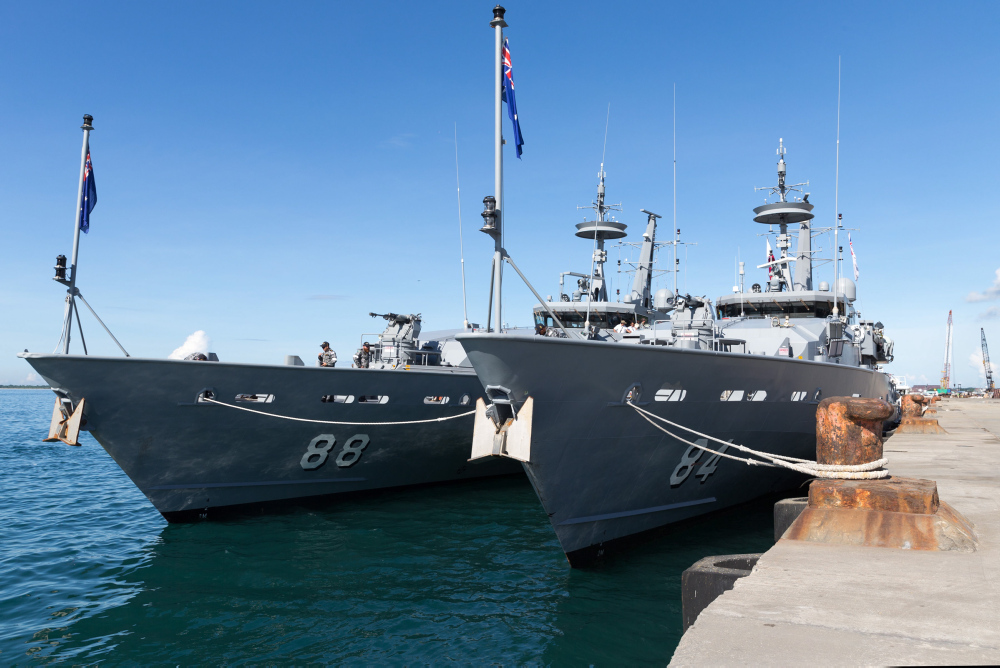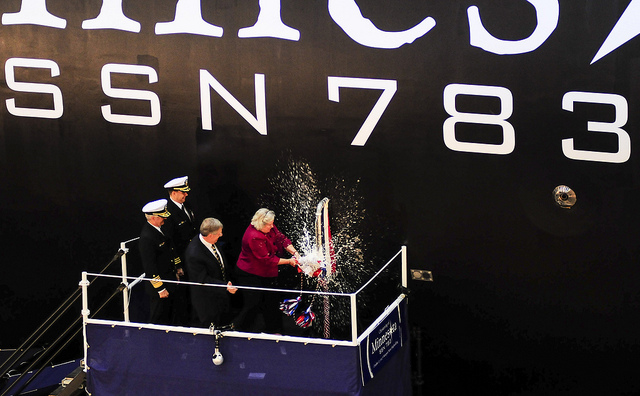Nuclear weapons for Australia—not so fast

In my new Quarterly Essay, I argue that Australia may have to rethink the acquisition of nuclear weapons in the post-American Asia which I believe is now upon us. Paul Dibb has recently made a similar point. I stopped well short of either advocating that we should take that step or predicting that we will, and I think Paul did the same. Even so, I thought what we’d each said in our different ways was rather bold.
But we were not bold enough to please Andrew Davies, who has gently but firmly reproved us for being coy, which suggests that he thinks we both really believe that Australia should go nuclear, but just are too timid to say so. Well I can’t speak for Paul, but for myself I’d like gently but firmly to correct that implication.
I do think that there’s a good deal of force in Andrew’s argument that it would make no sense to invest in the more capable conventional forces we’d need to resist a direct conventional threat from China without US support unless we also built nuclear forces as well, because conventional forces would be useless unless backed by a nuclear deterrent. That’s why I’ve argued that we’d need to look at the nuclear question closely. But I have three reasons for thinking it would be premature to try to decide right now whether that argument is correct and whether we should go nuclear.
First, we shouldn’t presume to know with certainty how nuclear forces will function in shaping strategic affairs in the decades to come in Asia. These weapons are extremely revolutionary and still only 72 years old. They have hardly ever been used. Everything we think we know about their strategic effects derives from the single ‘case study’ of the Cold War, which was framed by a specific and unique set of ideological, geopolitical and operational circumstances.
We don’t know how far the lessons we learned from that contest will hold good in the very different circumstances of Asia over coming decades, and we’ve hardly even begun to think about that question. So although, like Andrew and Paul, I think it’s likely that a nuclear-armed power could neutralise the conventional forces of a non-nuclear adversary by nuclear blackmail, I wouldn’t want to incur the costs and risks of building nuclear forces without thinking a lot more about that. That’s something we should start doing right now.
Second, it would be premature even to consider the nuclear question before we’ve decided whether to invest in the conventional forces needed to resist a military attack from a major Asian power. As Andrew rightly points out, there is a real choice to be made here. It would be perfectly legitimate to conclude that the risk of such an attack over coming decades is too low to justify the costs of building the conventional forces to resist it.
We can’t make that decision soundly until we know a lot more than we do now about both sides of the cost-and-risk equation: how big is the risk, and what conventional forces would be needed, at what cost? We’ve hardly even begun to explore all that, because for so long until so recently our defence and strategic community has been so unshakably certain that American primacy in Asia would last forever.
Some will no doubt be tempted to think that the whole question of conventional forces can be sidestepped by going straight to nuclear weapons instead. I think they’d be wrong. Noting the warning I just gave against jumping to conclusions about the strategic implications of nuclear forces, I think it’s very unlikely that they could serve as an alternative to conventional forces in Australia’s defence against nuclear adversaries. Their role would simply be to prevent an adversary deterring us from using our conventional forces by threatening a nuclear attack. So nuclear forces will do nothing for us if we don’t also invest in the conventional forces we’d need to win a conventional war.
Finally, even once we reach a decision on conventional forces, the decision on nuclear forces would remain to be made. Andrew suggests, I think, that that isn’t so. He seems to think there is only one choice to be made, embracing both conventional and nuclear forces, because if the risk of attack by a major power is high enough to warrant building the conventional forces needed to resist it, then it is high enough to warrant building nuclear forces too.
But for me a choice to acquire nuclear weapons would be a separate and very different step. I could easily imagine that one might conclude that while the risk of a major-power attack was high enough to justify the costs of building more capable conventional forces, it wasn’t high enough to justify the much higher costs and risks of going nuclear.
Those costs and risks have many dimensions. One is fiscal. The nuclear forces Australia would need to neutralise the threat from a nuclear-armed great power—essentially a ‘minimum deterrent’ force—would have to have very high-yield warheads and long-range delivery systems and be secure from preemptive attack. It would most likely need to look a lot like the British or French nuclear forces. That might cost us another 2% of GDP on top of the 4% that I’ve estimated the conventional forces would cost. Would the risk justify that spend?
Another dimension of cost is strategic. We’d need to be very sure that nuclear forces would on balance make us more rather than less secure. Every weapon is a two-edged sword, nuclear weapons much more than others. We’d need, for example, to be attuned to the likelihood that an Australian nuclear program would spur others to do the same, contributing to a spiral of proliferation which would increase the nuclear risks for all.
There’s also a moral dimension to the question. Building any military capability is a grim business, because we’re deliberately preparing the means to use lethal force to achieve political objectives. But the moral content of decisions about nuclear weapons is different from those involving conventional weapons, because their effects are not just quantitatively but qualitatively different. We shouldn’t lose sight of how horrific these weapons are, and we should remain very reluctant indeed to acquire them.
For all those reasons, I think a decision on nuclear forces would be, and should be, separate from, as well as subsequent to, a decision on conventional forces, and would only be justified if we believed the risk of attack was very high. I’m far from sure it is that high. Of course, if we decided it wasn’t, we’d then need to go back and revisit our choice on conventional forces as well.







